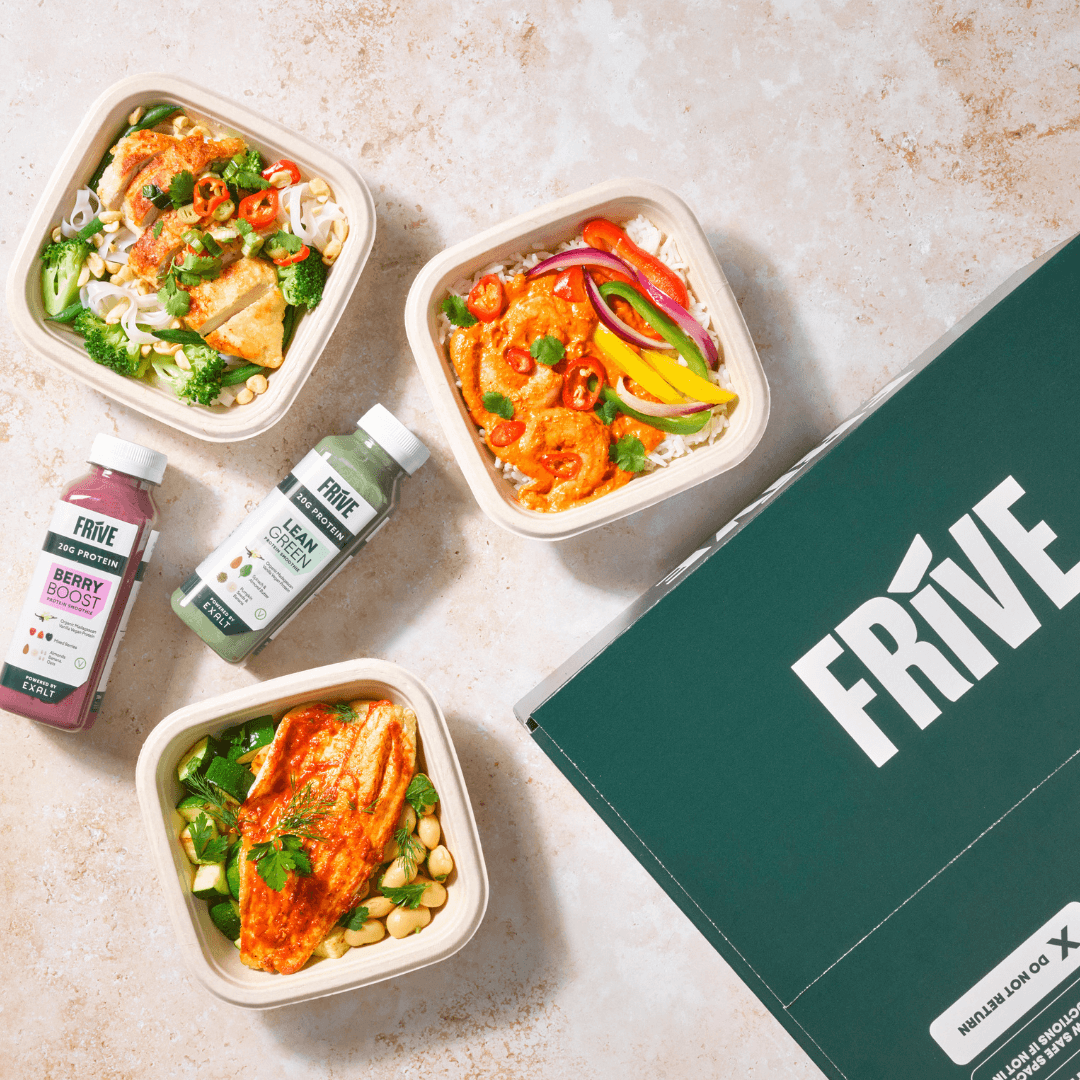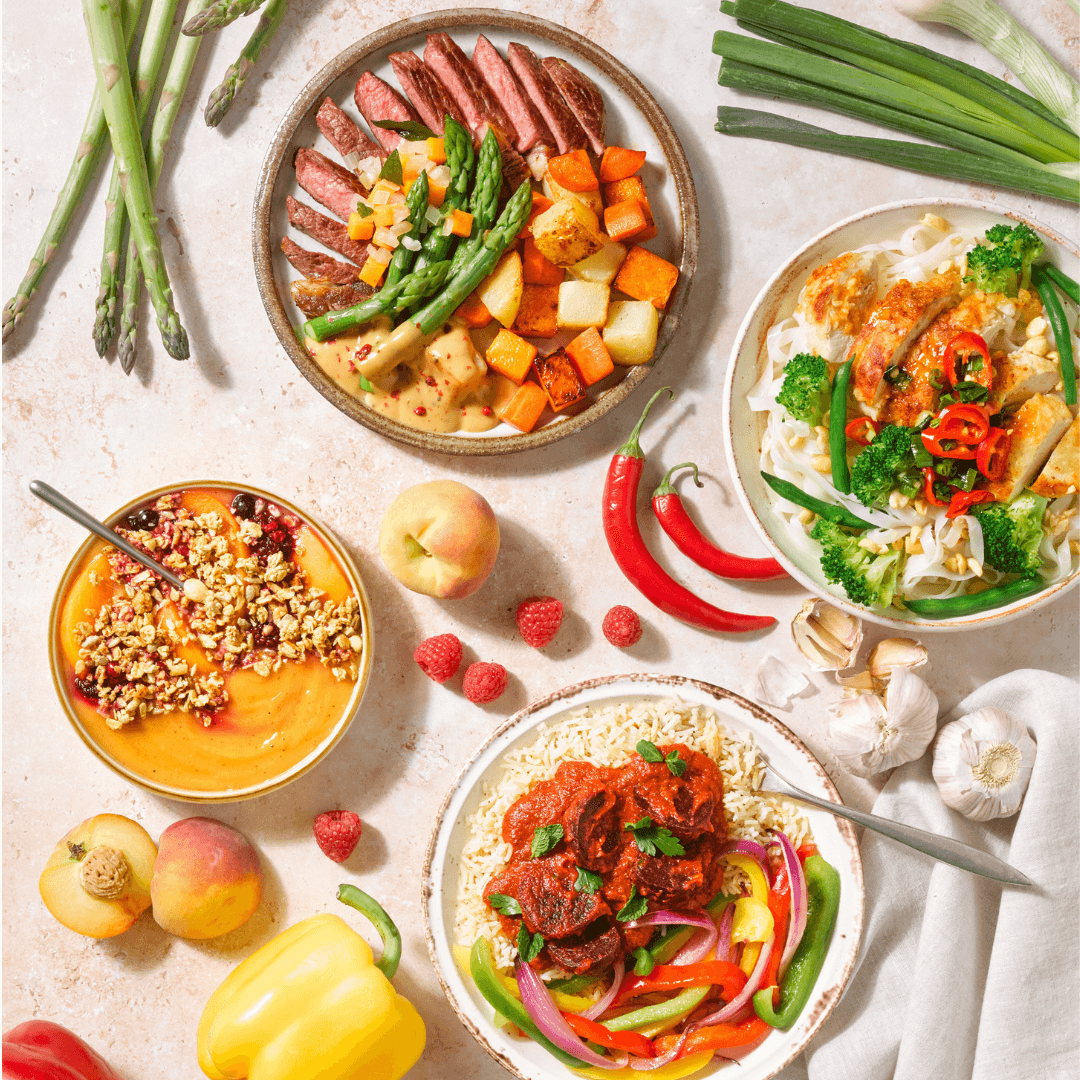Frozen meals were once known for long ingredient lists and ultra-processed shortcuts. As awareness around UPFs has grown, frozen food brands have worked hard to clean up their recipes and offer healthier options. They still play an important role at home, providing reliable, long-lasting meals for busy evenings or last-minute changes in routine.
At the same time, more people now want fresh, ready meals for everyday eating. Improvements in packaging and cold-chain delivery have opened the door for meal prep delivery services, like Frive, to make cooking-free eating possible without sacrificing flavour or ingredient quality. Fresh meals offer better texture, more natural taste and a closer match to home-cooked food.
In this article, we’ll compare fresh and frozen options, explore where each one excels and explain why most households benefit from keeping both in their routine.
Frozen meals have come a long way
The frozen category has modernised fast. Supermarkets and frozen delivery brands, like COOK and Allplants, now offer cleaner, better-balanced meals that are far removed from the heavy, overly processed trays of the past. They offer consistency, long shelf life and a dependable safety net for frantic weeks.
Freezing, however, still has its limits. Even with these improvements, freezing always affects texture and flavour. Vegetables soften, proteins tighten, and sauces lose some depth.
Fresh meals avoid this because they are cooked and chilled, not stored for months, which keeps flavours brighter and textures closer to something freshly made at home. There is also a clear shift away from using UPF-style ingredients, as consumers increasingly look for meals built on whole foods rather than thickeners, stabilisers or long-life additives that frozen products often rely on for structure.
The big question is whether these differences are genuinely noticeable in everyday eating and what other factors matter when choosing between fresh and frozen meals. Let’s explore that in more detail.

Order Now: Tom Yum Beef Soup with Japanese Vegetables & Fragrant Herbs
Fresh vs frozen: The real trade-offs
1. Texture & flavour
Frozen meals
Freezing changes food at a structural level. As water inside ingredients turns to ice, it expands and forms crystals that damage cell walls. This softens vegetables, tightens proteins and reduces the intensity of sauces over time. Even with high-quality ingredients, freezing always alters texture and flavour in some way.
Fresh meals
Fresh meals avoid these changes because they move straight from cooking into chilled storage. Vegetables keep their natural firmness, proteins remain tender, and sauces hold onto more of their richness. The shorter time between cooking and eating also helps preserve more of the meal’s original nutrient profile, giving you food that feels and tastes closer to something cooked that same day.
2. Nutrition & ingredient integrity
Frozen meals
Freezing preserves most nutrients well, but some water-soluble vitamins, such as vitamin C and certain B vitamins, can break down during the freezing and storage process. Frozen meals also often rely on stabilisers or thickeners to help ingredients hold their shape after reheating, which increases overall processing.
Fresh meals
Fresh meals move straight from cooking to chilled storage, helping more nutrients remain intact without long holding times. The shorter chain keeps ingredients closer to their original state and often leads to steadier energy, better focus and a fuller, more satisfied feeling after eating. Because fresh meals aren’t designed to last months, they don’t require stabilisers or long-life additives, keeping the overall ingredient profile more natural.
Read our guide to find out more about how long meal prep lasts in the fridge and freezer.
3. Processing levels & UPFs
Frozen meals
Because frozen meals must withstand long-term storage and reheating, many rely on stabilisers, emulsifiers, or modified starches to maintain texture and prevent separation. These ingredients are safe but increase overall processing, which is why many frozen products fall higher on the UPF scale. Even premium frozen brands often need small amounts of these additives to protect texture during freezing and thawing.
Fresh meals
Fresh meals don’t require the same long-life support. They move from cooking to chilled delivery without months of storage, which removes the need for stabilisers, thickeners or engineered textures. As a result, fresh meals tend to be built almost entirely from whole ingredients, offering a cleaner profile that aligns with shoppers trying to reduce UPFs in their weekly routine.
No time to cook? Read our guide that discusses how to eat healthy when you have no time cook.
4. Convenience & everyday routine
Frozen meals
Frozen meals offer long shelf life and reliable backup options. They’re ideal for busy evenings, unexpected schedule changes or days when you need something quick without planning ahead. The trade-off is that they still require freezer space, longer heating times for some dishes and occasional thawing. They work best as a safety net rather than a full weekly routine.
Fresh meals
Fresh meal prep delivery meals are designed for everyday eating. They heat in minutes, require no defrosting and remove the need for shopping, prepping or cooking.
Meal prep services like Frive save subscribers at least 7 hours per week that would otherwise be spent planning meals, grocery shopping, cooking and cleaning up.
These services also let you choose delivery days, portion sizes and the number of meals you need, making it easy to build a consistent routine around healthier eating. For busy people who want minimal effort and maximum quality, fresh tends to be the more effortless option.
Read our guide ‘7 Time-Saving Benefits of Switching to Ready-Made Meal Plans’ to find out more.
5. Cost vs value
Frozen meals
Frozen options usually win on cost, given the mass-production nature of supermarket meals. Portions tend to be cheaper, and the long shelf life helps reduce waste while giving households more control over when they spend on food. For many people, this makes frozen meals a practical, budget-friendly staple to keep on hand.
Fresh meals
Fresh meal prep delivery often delivers stronger value over time. Macro-balanced dishes keep you fuller for longer, which naturally reduces snacking and cuts down on last-minute takeaway spending. A consistent supply of healthy, ready-to-eat meals also stabilises your weekly routine, leading to more predictable food costs and fewer impulse purchases.
If you want to understand the financial side in more detail, our guide “How much does meal prep delivery really save you?” breaks down the real cost differences across shopping, cooking, waste and time.

Order now: Frive’s Cajun King Prawns & Spanish-Style Rice
When frozen meals are a great choice
Frozen meals still have a useful place in many households, particularly when life gets unpredictable and all of your plans fly out the window.
Frozen meals work well for:
- - Busy evenings when you walk through the door and want something easy, you can put it in the oven or microwave.
- - Nights when the kids suddenly have friends over and you need quick, reliable portions without cooking from scratch.
- - Those “Oops, I forgot to plan” moments where a stocked freezer stops you reaching for a takeaway.
- - Families who batch buy to keep food costs low and predictable, and dinners simple.
- - Older adults who prefer comfort-style meals that keep well and are easy to reheat.
- - Students and young professionals who want budget-friendly options they can keep on hand.
- - Anyone who likes having a safety net for days when life suddenly gets busier than expected.
Why fresh meal delivery is becoming the modern default
The fresh meal delivery niche has grown quickly in recent years, driven by changing habits and higher expectations around food quality. People want meals that taste good, feel good and fit easily into busy routines. Fresh meal delivery addresses all of these needs without adding extra work.
Fresh delivery is becoming the new normal because:
- - Expectations for ingredient quality are higher than ever.
- - People want fresh food that tastes real and satisfying.
- - Busier lifestyles leave less time to shop or cook every day.
- - Health-conscious shoppers are choosing meals without UPFs.
- - Improvements in packaging, cooling materials and delivery tech have made chilled meals easier, faster and more accessible than ever before.
- - Next-day delivery and modern meal prep services make fresh food easier to access.
- - Fresh meals now match or beat frozen options for speed and convenience.
- - Curated menus take away the stress of decision fatigue.
When fresh meals are a great choice
Fresh, ready-made meals shine on the days when you want real flavour, good nutrition and zero effort. Fitting naturally into everyday life, fresh meals make it easier to eat well without planning or prep, while frozen options work better as a reliable backup.
Fresh meals work best for:
- - Busy weekdays when you want healthy, proper food in minutes instead of something that feels like a compromise.
- - Evenings when you come home from work hungry and want food that tastes closer to home cooking, not reheated-from-frozen.
- - Days when you are trying to eat well, support your protein goals or keep energy levels steady without the temptation of a takeaway.
- - Moments where you want quality food but don’t have the time or headspace to shop, prep or cook.
- - Quick lunchtimes between meetings when snacks or sandwiches just won’t cut it.
- - Routines where you are building healthier habits and need meals that help you stay consistent day after day.
- - Households with different diets and food preferences, where single fresh portions are easier than cooking multiple dinners.
- - Anyone who prefers fresh taste, crisp texture and real ingredients, rather than the softer texture of frozen meals.
- - Fitness regimes that require consistent, balanced meals that support recovery, weight loss, muscle gain, performance gains and steady energy throughout the week.
Where Frive fits in: Fresh convenience without compromise
1. Designed to be eaten fresh, not stored
Frive meals are made to be enjoyed fresh, with crisp vegetables, tender proteins and sauces that keep their vibrancy through the week. Recipes are created for chilled storage rather than months in a freezer, so textures and flavours stay closer to home-cooked meals. And don’t worry, if plans change, Frive meals can still be frozen. They just taste their best when eaten fresh.
2. 100% Whole Ingredients, Zero UPFs
Every Frive dish is cooked with whole ingredients only. There are no additives, no seed oils and no ultra-processed shortcuts. Everything is prepared using simple, natural cooking methods so the flavour comes from real food rather than thickeners or stabilisers.
Want to explore this approach in more detail? Check out Frive’s Healthy ready meals and Balanced meal plans to achieve your goals and transform your health.
3. High-Protein, Nutritionist-Approved Meals
Each meal is built around high-quality protein and balanced macros to make consistency easier. All recipes are designed to support steady energy, better focus and performance throughout the week.
Frive also offers meal plans that cater to vegan, vegetarian, low-calorie, halal, dairy-free and gluten-free. Perfect for mixing and matching with others in your household who might require specific meal types.
4. Ready in Under 5 Minutes
Heating a Frive meal takes under five minutes, giving you fresh, real food faster than most frozen options. There’s no thawing, no planning and no waiting around. Just heat, eat and get on with your day.
5. Fits Your Weekly Routine
Meals stay fresh for seven days to make weekly planning simple. Split deliveries keep the fridge stocked, and the dishes fit naturally into busy schedules without extra shopping or prep. Split delivery days allow you to order meals at different points throughout the week that help to keep your meals as fresh as possible.
Fresh vs Frozen: The Honest Bottom Line
Frozen meals work well as a dependable backup, offering long shelf life and predictable convenience for the days when plans change or time is tight. They’re cost-effective, easy to store and ideal to keep on hand for last-minute meals.
Fresh meal prep delivery, on the other hand, tends to win on everyday eating. Fresher ingredients, better texture and more natural flavour make these meals feel closer to home cooking, while balanced macros support better energy, focus and consistency throughout the week.
Most households don’t need to choose one or the other. Frozen meals provide reliability, while fresh delivery makes healthier, better-quality eating effortless day to day.
Used together, they create the most flexible routine, giving you both the convenience of a stocked freezer and the quality of fresh, ready-to-eat meals when you want them.
If you want fresh meals without the shopping, prepping or cooking, Frive makes it simple. Choose your dishes, pick your delivery days and enjoy real food ready in minutes. Try Frive today!!
FAQs
Are fresh ready meals healthier than frozen meals?
Fresh meals often use whole ingredients and fewer additives, while freezing can reduce some vitamins and soften textures. Both can be healthy, but fresh usually offers a cleaner, more natural option.
Do frozen meals count as UPFs?
Some do. Frozen meals often need stabilisers or thickeners to survive long storage. Fresh meal prep delivery typically avoids these, making them lower on the UPF scale.
Are fresh meal prep deliveries like Frive worth the cost?
Often yes. Fresh meals keep you fuller for longer and reduce snacking, takeaways and time spent cooking. Many people find the weekly cost more predictable than frozen or supermarket shopping.
Which is better for high-protein or fitness goals: fresh or frozen?
Fresh meals usually offer better protein texture and consistency because they aren’t affected by freezing. They tend to support steadier energy and recovery, while frozen works best as a backup.
Do fresh meals taste better than frozen meals?
Most people notice a difference. Freezing softens vegetables and tightens proteins, while fresh meals keep their natural texture and flavour, tasting closer to home-cooked food.
Should I use both fresh and frozen meals in my routine?
Yes. Frozen meals are ideal for backup days, while fresh meals work best for daily eating. Using both gives you convenience, quality and flexibility.
What’s the easiest option if I have no time to cook?
Frozen meals are the quickest emergency option, but fresh meal prep delivery is the most effortless day-to-day. Meals arrive cooked, balanced and ready in minutes with no shopping or prep.



